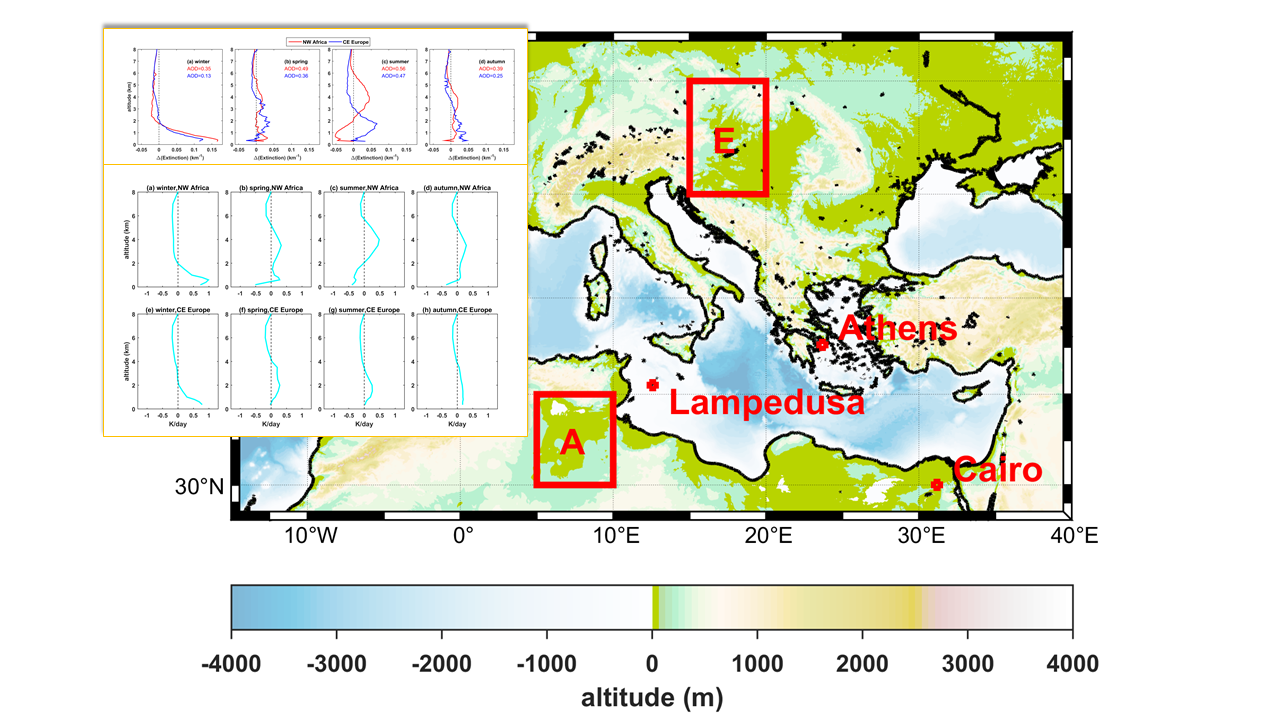Default aerosol extinction coefficient profiles are commonly used instead of measured profiles in radiative transfer modelling, increasing the uncertainties in the simulations. The present study aims to determine the magnitude of these uncertainties and contribute towards the understanding of the complex interactions between aerosols and solar radiation. Default, artificial and measured profiles of the aerosol extinction coefficient are used to simulate the profiles of different radiometric quantities in the atmosphere for different surface, atmospheric, and aerosol properties and for four spectral bands: ultraviolet-B, ultraviolet-A, visible, and near infrared. Case studies are performed over different areas in Europe and North Africa. Analysis of the results shows that under cloudless-skies, changing the altitude of an artificial aerosol layer has minor impact on the levels of shortwave radiation at the top and the bottom of the atmosphere, even for high aerosol loads. Differences up to 30% were however detected for individual spectral bands. Using measured instead of default profiles for the simulations leads to more significant differences in the atmosphere, which become very large during dust episodes (10 – 60% for actinic flux at altitudes between 1 and 2 km, and up to 15 K/day for heating rates depending on site and solar elevation).

